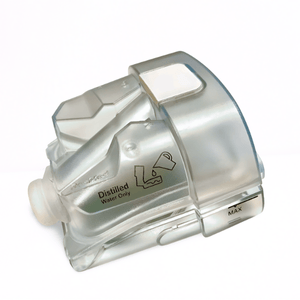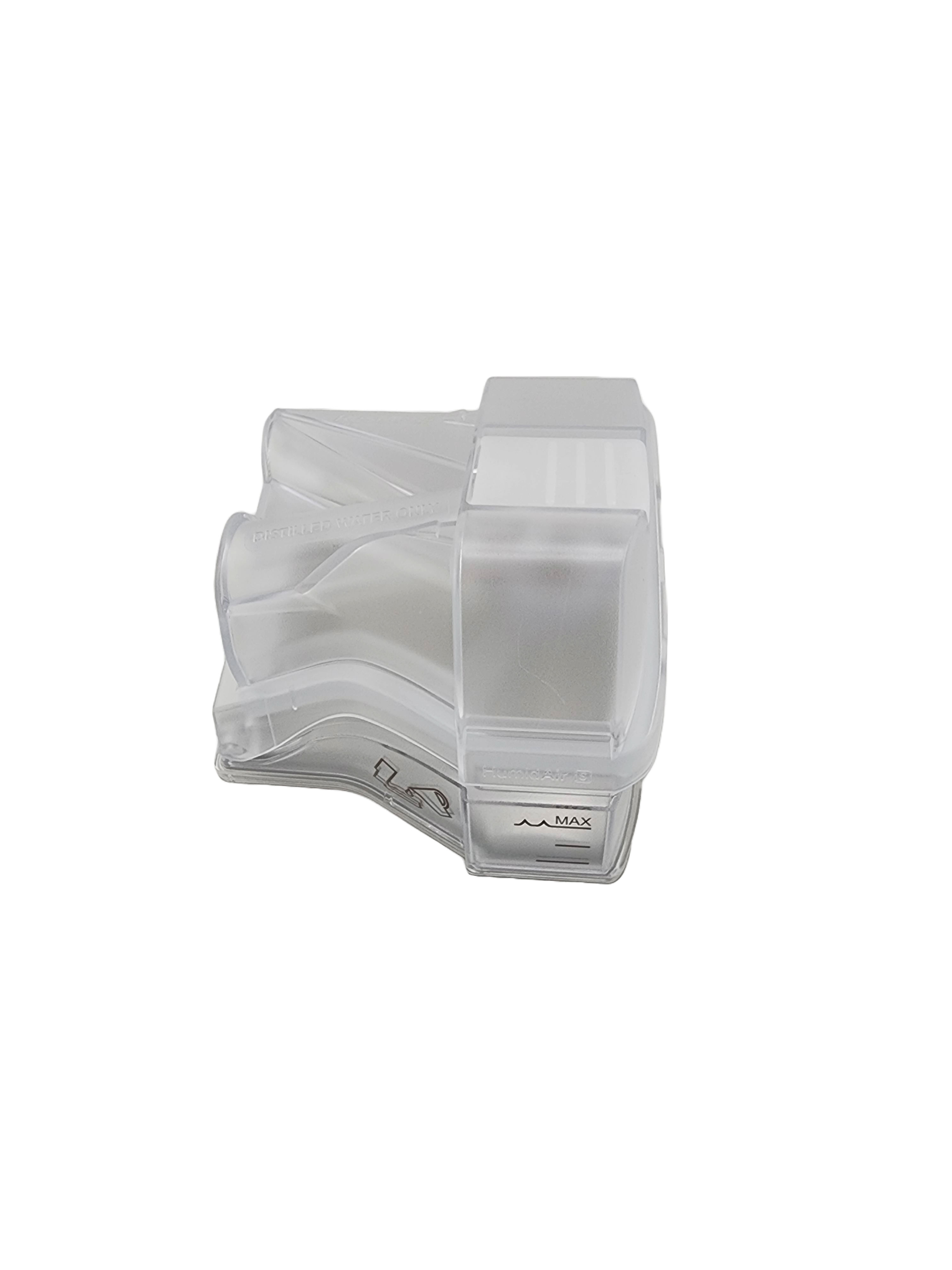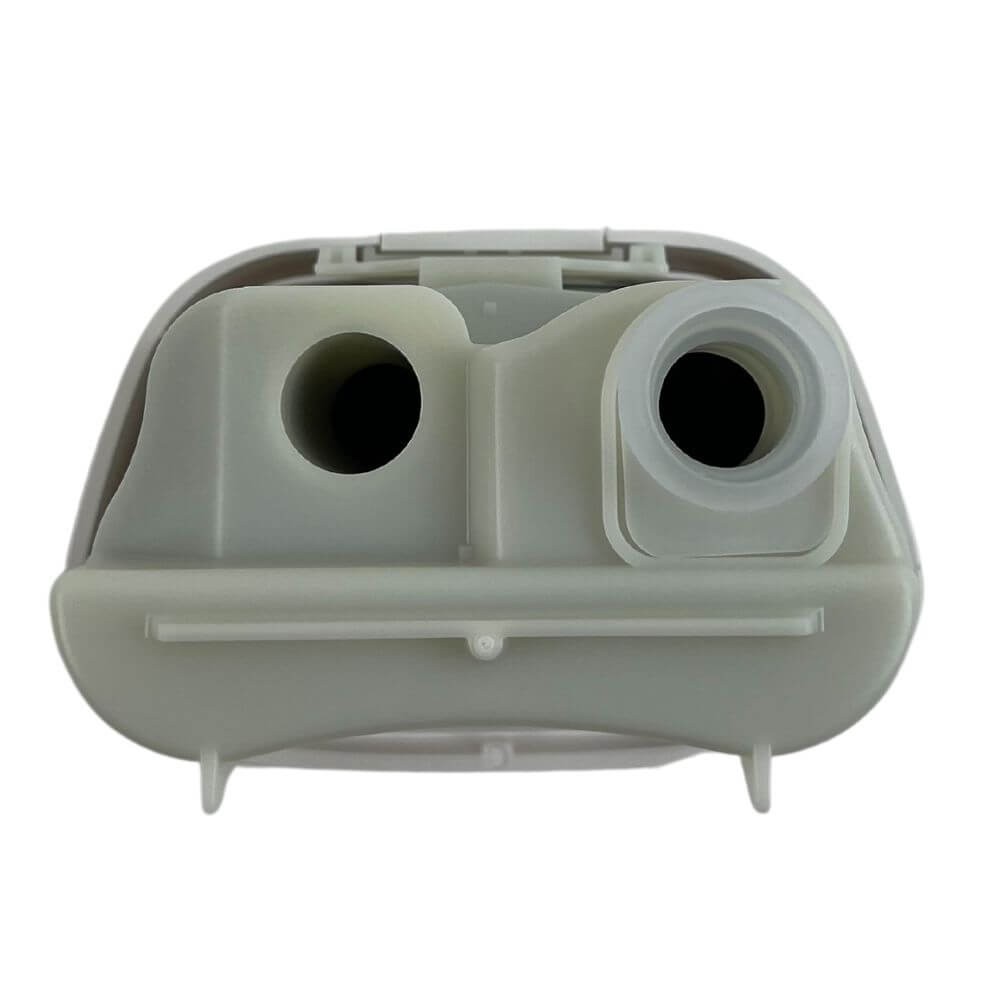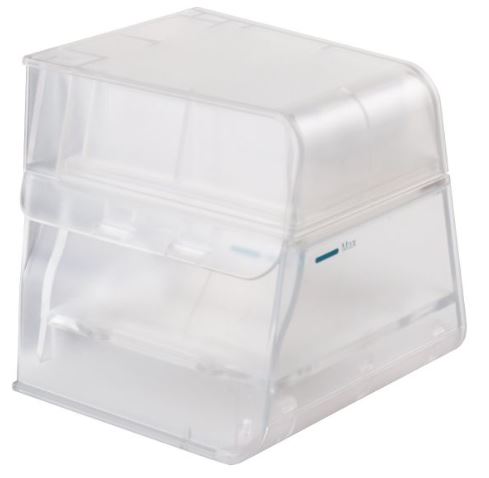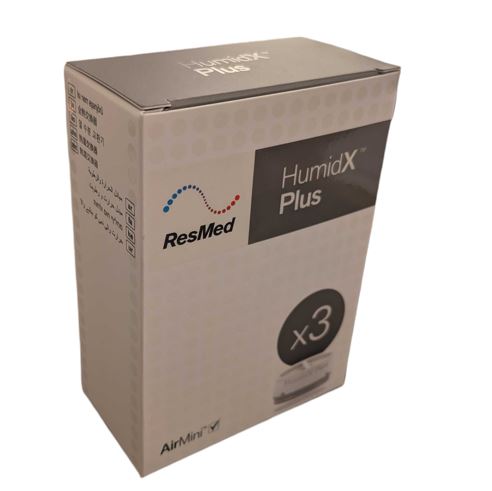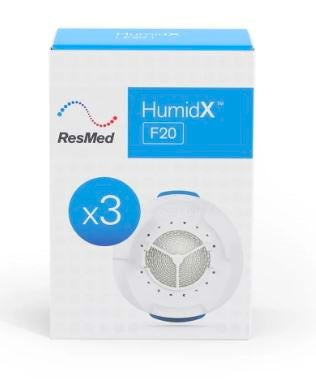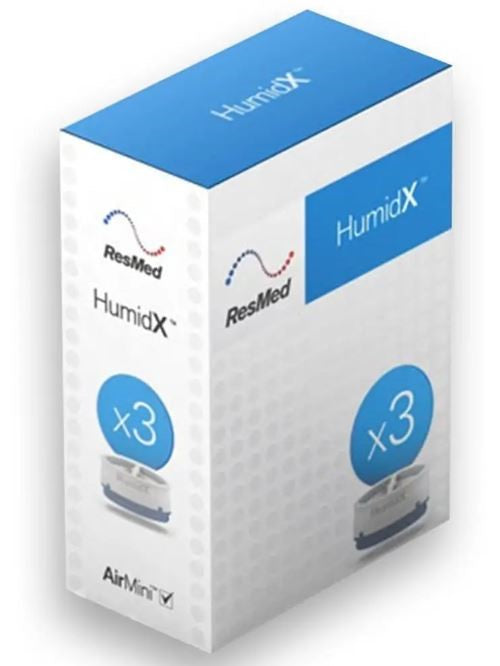Best CPAP Water Chambers & Replacement Parts | Shop Online
CPAP Humidifiers Water Chambers And Parts
Explore our comprehensive collection of CPAP humidifiers, water chambers, and parts, designed to enhance the comfort and effectiveness of your sleep therapy by alleviating dryness and irritation, ensuring a more comfortable breathing experience, and supporting the maintenance and longevity of your CPAP equipment, with our high-quality selection of essential components helping you optimize your therapy and enjoy improved sleep quality.
Shop Our Range of Water Chambers & Parts at Sale
What are CPAP Water Chambers?
The CPAP water chamber, also known as a water tub or reservoir, is the heart of your humidifier. It holds the distilled water that gets heated and turned into a cool mist, adding moisture to the pressurized air delivered by your CPAP machine. This added moisture helps to:
- Reduce dry mouth and throat irritation: Dry air can irritate your airways, leading to a sore throat and a parched mouth upon waking. Humidification combats this by adding moisture back into the air you breathe.
- Improve comfort: Moist air feels more comfortable and natural to breathe, leading to a more restful sleep experience.
- Minimize congestion: Humidification can help loosen mucus and clear congestion, further improving your breathing.
What is a CPAP Machine?
A CPAP (continuous positive airway pressure) machine is a life-changing device for millions suffering from sleep apnea. By delivering a constant stream of pressurized air, it keeps your airway open during sleep, preventing those suffocating episodes that disrupt your rest. But for many users, a key component to a comfortable and effective CPAP experience is the humidifier.
Finding the Right Replacement Water Chamber
With various CPAP machine models and humidifier types available, finding the compatible replacement water chamber can seem daunting. Here's what you need to know:
- Identify your CPAP machine model: Knowing your specific CPAP machine model is crucial for finding the compatible water chamber. This information is typically located on a sticker on your machine.
- Top Brands: We offer water chambers and parts for all major CPAP machine brands, including ResMed (AirSense™, HumidAir™), Philips Respironics (DreamStation, System One), Fisher & Paykel (SleepStyle), Transcend, and Luna.
- Search by Machine Model: Many online retailers, including ours, allow you to search for replacement parts by your specific CPAP machine model. This ensures you find the perfect fit.
Popular Water Chamber Replacements
Here's a glimpse into some of the most popular water chamber replacements available:
1. ResMed AirSense™ Water Chambers
We offer a variety of water chambers for different AirSense models, including the standard and heated humidifier options.
2. DreamStation Water Chambers
Replacement water chambers for both DreamStation 1 and 2 models are readily available.
3. Fisher & Paykel SleepStyle Water Chambers
Find compatible water chambers for various SleepStyle models, ensuring optimal humidification for your Fisher & Paykel CPAP machine.
4. Water Chamber for IntelliPAP 2 Heated Humidifier
Replacement water chambers specifically designed for the IntelliPAP 2 machine, including options for both standard and heated humidifiers.
Why You Might Need a Humidifier with Your CPAP Machine
While CPAP therapy is incredibly effective in treating sleep apnea by keeping your airway open, the constant flow of pressurized air can sometimes come with a side effect: dryness. This dryness can impact your comfort and potentially hinder your long-term CPAP use. Here's why a humidifier can be a game-changer for your CPAP experience:
- Combating Dryness and Irritation: The forced air from your CPAP machine can dry out your nasal passages and throat, leading to congestion, sore throat, and even nosebleeds. A humidifier adds moisture to the therapy air, mimicking the natural humidification process and preventing these discomforts.
- Enhanced Comfort: Moist air feels more natural and comfortable to breathe, leading to a more restful sleep experience. This is especially important for new CPAP users who might be adjusting to the sensation of pressurized air.
- Improved Therapy Adherence: Discomfort caused by dryness can lead to CPAP mask leaks or mask removal during sleep, ultimately reducing the effectiveness of your therapy. Humidification can significantly improve comfort and encourage consistent CPAP use.
- Soothing Congestion: If you suffer from allergies or sinusitis, a humidifier can help loosen mucus and clear congestion, making breathing easier throughout the night.
Not Everyone Needs a Humidifier: It's important to note that not everyone who uses a CPAP machine necessarily needs a humidifier. Here are some factors to consider:
- Climate: If you live in a humid climate, you might find the ambient moisture sufficient for comfortable CPAP use.
- CPAP Pressure Settings: Higher CPAP pressure settings can cause more dryness, making a humidifier more beneficial.
- Individual Sensitivity: Some people are simply more sensitive to dry air than others.
CPAP Humidifier Tips for Optimal Performance
Here are some essential tips for getting the most out of your CPAP humidifier and water chamber:
- Use distilled water: Tap water contains minerals that can leave behind white dust (mineral deposits) in your chamber and tubing. Distilled water is free of these minerals, preventing build-up and ensuring optimal performance.
- Replace your water chamber regularly: It is important to refresh the water daily. While some chambers are dishwasher safe, frequent cleaning can cause wear and tear. Most manufacturers recommend replacing the chamber every 6 months to ensure a safe and effective humidification experience.
- Clean your humidifier regularly: Regular cleaning of your humidifier, including the chamber, tubing, and mask, is crucial to prevent bacteria and mold growth. Follow your manufacturer's cleaning instructions for specific details.
- Empty and refill daily: Empty your water chamber and refill it with fresh distilled water each day. This helps prevent bacteria growth and ensures you're breathing in the cleanest, most comfortable air possible.
- Maintain proper humidity levels: Too much humidity can lead to rainout (water droplets forming in the tubing), while too little won't provide the desired comfort. Experiment with different humidity settings to find the level that works best for you.
Maintaining CPAP Water Chamber for Improved Performance
It is recommended that your CPAP chamber should be replaced every 6 months, but proper cleaning and maintenance can extend its lifespan and ensure optimal performance in between replacements.
Daily Cleaning
- It is important to keep your CPAP water reservoir clean daily.
- Empty your water chamber completely after each night's use or it should be cleaned each morning before use. Discard the leftover water.
- Rinse the chamber thoroughly with warm water. You can use a mild detergent or fragrance-free dish soap if your manufacturer recommends it (always check the manual for specific cleaning instructions).
- Do not use harsh chemicals, bleach, or abrasive sponges, as these can damage the chamber.
- Rinse the soap away completely with clean water.
- Completely air-dry before refilling with fresh distilled water. Leaving any moisture can promote bacteria growth. Consider using a drying rack or propping the chamber open in a well-ventilated area.
Weekly Cleaning (Optional)
- Some manufacturers recommend a more thorough cleaning once a week. This may involve soaking the chamber in a vinegar solution (follow specific instructions provided in the manual) to wash your humidifier chamber.
- Never submerge your entire CPAP machine in any liquid.
Addressing Issues
- Mineral Deposits: If you notice white buildup (mineral deposits) in your CPAP humidifier chamber, even with using distilled water, a citric acid solution soak may be recommended by your manufacturer.
- Cracks or Discoloration: If your chamber shows signs of cracking, leaking, discoloration, or excessive pitting, it's time to replace it for safety and optimal performance.
Replacement Considerations
- Even with regular cleaning, the water chamber should be replaced every 6 months. Wear and tear over time can lead to leaks and bacterial growth.
By incorporating these cleaning practices into your routine, you can ensure that your CPAP water chamber remains in top condition, providing you with consistent and effective humidification for a more comfortable CPAP therapy experience.
FAQs
Our committed team is available to support you through every step of your treatment journey.



